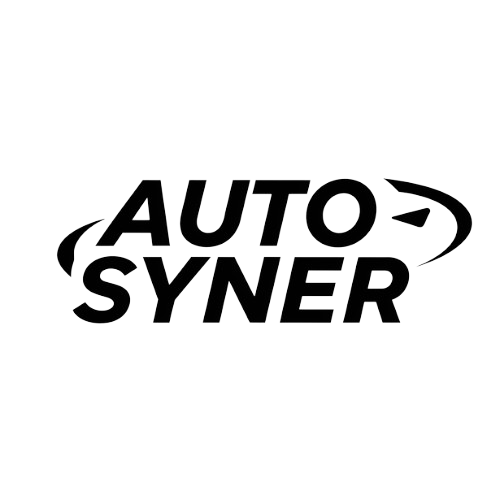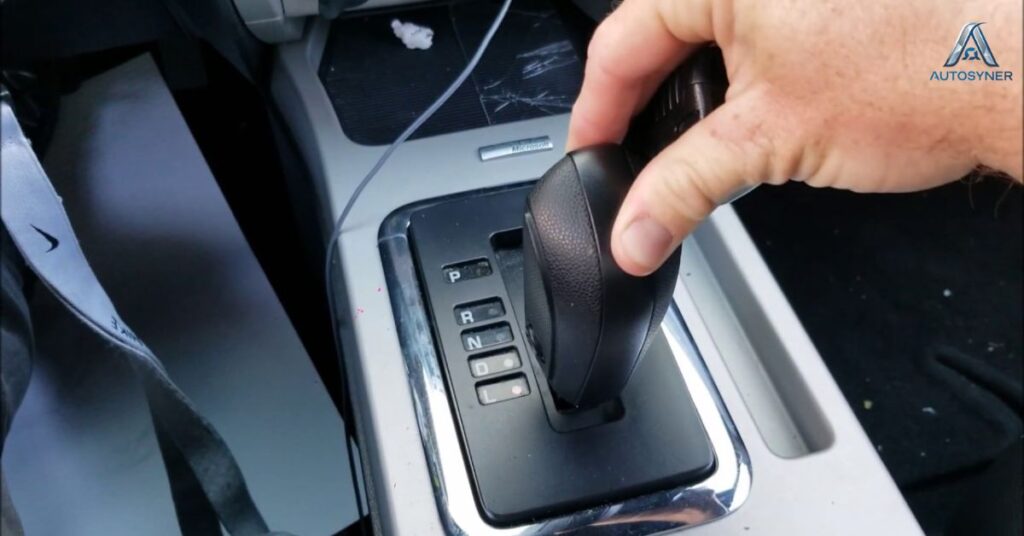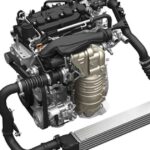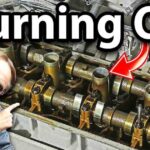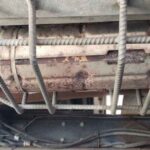Having trouble putting your car in gear when the engine is running can be frustrating. There are several reasons why this might happen, but don’t worry! There are some simple things you can check and fix to get your car back on the road smoothly.
Is your car being stubborn about shifting gears when the engine is running? It’s like it’s saying, Not today But fear not, there are some quick tricks to get things moving smoothly again. Let’s dive in and unravel the mystery behind your car’s gear-shifting woes.
Top 8 Reasons Your Car Won’t Go Into Gear
Clutch Issues
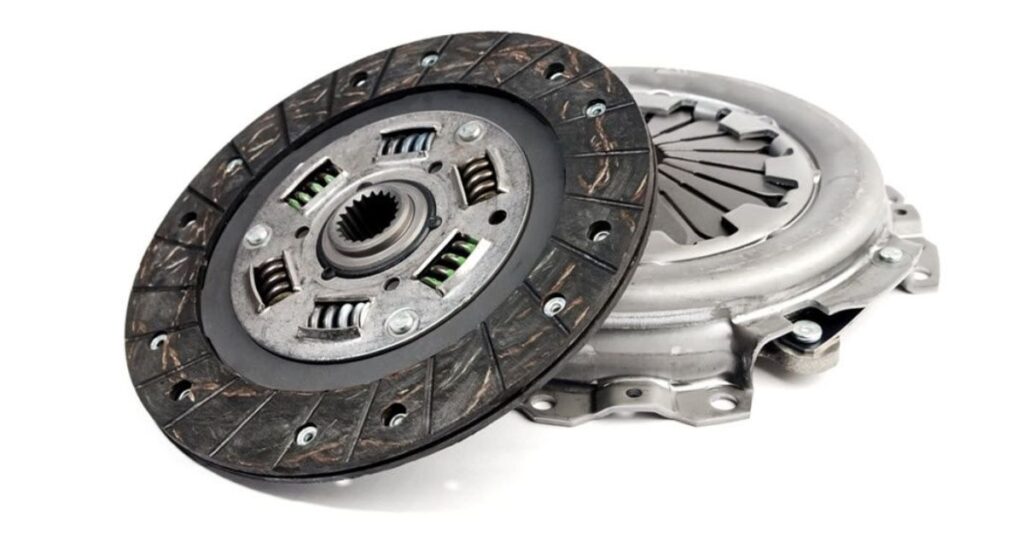
Clutch is sometimes, cars have problems with their clutches. The clutch helps the car change gears smoothly. If the worn out or there’s a problem with the pedals, shifting gears can be hard. It’s like the car is saying, “I need a break! But don’t worry; a mechanic can usually fix it.
Brake Safety Lock Issues
Brake safety lock issues can make it hard to stop your car safely. These locks stop your car from moving when you park it. If there’s a problem with them, your car might move unexpectedly. This can be dangerous. So, it’s important to get brake safety lock issues fixed by a car mechanic as soon as possible.
Read This Blog: HOW TO FIND CATALYTIC CONVERTER SCRAP VALUE BY SERIAL NUMBER
Transmission Fluid Problems
Transmission fluid is like blood for your car’s gearbox. It helps keep everything moving smoothly. If there’s a problem with the transmission fluid, like it’s too low or dirty, your car might have trouble changing gears or moving smoothly.
It’s important to check the transmission fluid regularly and change it when needed to keep your car running well.
Loose or Broken Shift Linkage Wire
The shift linkage wire in your car is like a string that helps you change gears. If it’s loose or broken, it’s like having a string that won’t pull properly.
This can make it hard to switch gears smoothly or even select gears at all. It’s important to fix this problem quickly so you can drive safely.
Bad Torque Converter
Think of the torque converter in your car as a helper for smooth driving. But if it’s bad, it’s like having a helper who’s not doing their job right. This can make your car feel shaky or have trouble getting up to speed. Fixing this issue is important to keep your car running smoothly.
Bad Transmission
When your car’s transmission is bad, it’s like having a problem with the heart of your car’s moving parts. It can make your car struggle to go forward or backward, and it might make strange noises. Fixing this issue is crucial for your car to run properly again.
Failing Clutch Packs
Imagine the clutch packs in your car are like a team of helpers that help your car change gears smoothly. But if they’re failing, it’s like having unreliable helpers.
This can cause your car to jerk or slip when shifting gears. It’s important to fix this issue so your car can shift gears properly again.
Misaligned Gearbox
When your car’s gearbox is misaligned, it’s like the puzzle pieces aren’t fitting together right. This can cause trouble when shifting gears, making it hard to drive smoothly. Fixing this issue is important so your car can work properly again.
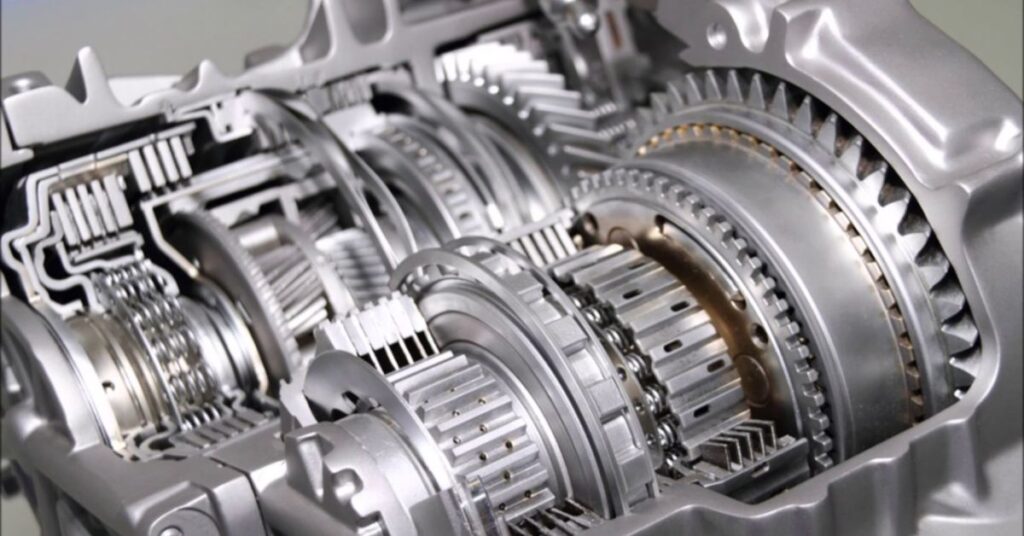
Steps to Take When Your Car Won’t Go into Gear before going to the Mechanic
Depress the Clutch More
If you’re having trouble shifting gears in a manual transmission car, try pressing the clutch pedal down further. It’s like giving it an extra push to make sure it disengages fully. This can help you shift gears more smoothly.
Press Your Brakes While Shifting out of Park
Before you shift your car out of park, remember to press the brakes. It’s like putting your foot down to stop before moving forward. This keeps your car steady and safe while you change gears.
Also Read This Blog:HOW TO START CAR WITH BAD IGNITION SWITCH?
Follow the Emergency Procedure to Release the Shift Lock
If you can’t shift your car out of park, follow the emergency procedure to release the shift lock. It’s like using a special key to unlock a door when you can’t find your regular key. This helps you move your car safely in case of an emergency.
Try to Put Your Car into a Different Gear
If your car is stuck, try putting it into a different gear. It’s like trying a different key to open a door when one doesn’t work. This might help get your car moving again.
Top Off or Replace Transmission Fluid
Imagine your car’s transmission fluid as its special juice that helps everything move smoothly. But sometimes, this juice gets low or dirty. Topping it off or replacing it is like giving your car a fresh glass of juice to keep it running smoothly. It’s an easy way to make sure your car stays healthy.
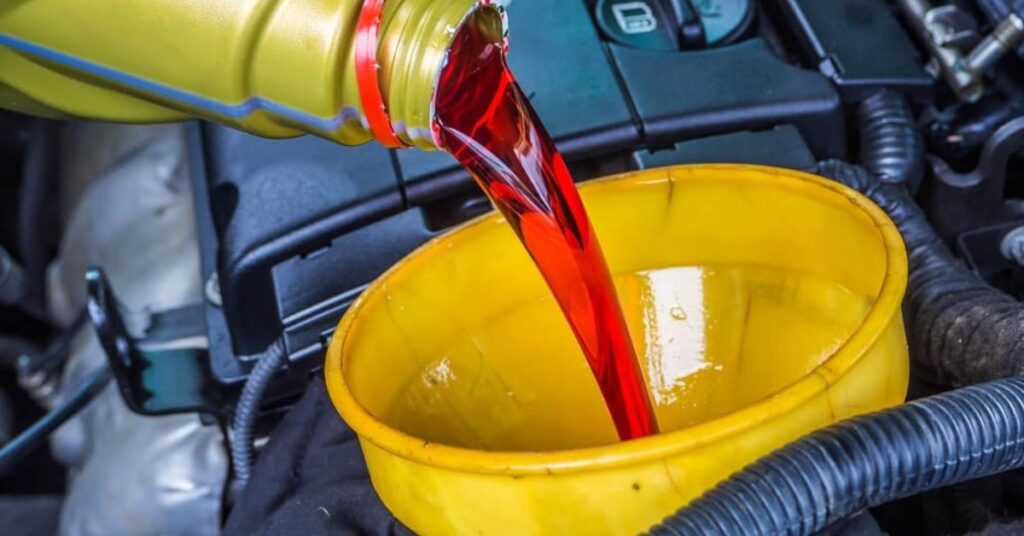
Have Your Car Towed to a Mechanic
If your car is not working right and you can’t fix it yourself, it’s like asking for help from a friend when you’re stuck. Having your car towed to a mechanic is like calling a friend with a tow truck to take it to a doctor who knows how to fix cars. This way, the mechanic can figure out what’s wrong and make your car better again.
Your Car Won’t Go into Gear? How to Diagnose the Issue
If your car won’t go into gear, it’s like trying to put a puzzle piece in the wrong spot. You need to figure out why it’s not fitting right. First, check if your car is on a flat surface and the parking brake is off.
Then, make sure the brake pedal is pressed down. If it still won’t go into gear, there might be a problem with the transmission fluid, clutch, or gear linkage. It’s like checking different parts of the puzzle until you find the missing piece.
If you can’t fix it yourself, it’s best to ask a car expert for help, like a mechanic. They know how to solve tricky car problems.
Transmission Problem: Faulty Linkage or Sensor Connection
If your car’s transmission isn’t working right, it could be because of a faulty linkage or sensor connection. Imagine it’s like trying to talk on the phone, but you can’t hear the other person clearly because the connection is bad.

Similarly, if the transmission linkage or sensor connection isn’t working properly, your car might not shift gears correctly. It’s important to check these parts and make sure they’re connected properly. If you’re not sure how to do it, you can ask a mechanic for help. They’re like the experts who can fix phone connections, but for cars.
How to Fix this Issue?
Fixing a faulty linkage or sensor connection in your car’s transmission requires careful inspection and possibly some basic repairs. Here’s a simple guide to fixing this issue.
Identify the Problem: Start by locating the transmission linkage and sensor connections. They are usually located near the transmission or gearbox under the hood of your car.
Inspect for Damage: Check the linkage and sensor connections for any signs of damage, such as loose bolts, broken wires, or corrosion. If you find any damage, it will need to be repaired or replaced.
Tighten Connections: If the connections are loose, tighten them using the appropriate tools. Make sure all bolts and connectors are securely fastened.
Clean Connections: If there is corrosion or dirt buildup on the connections, clean them carefully using a wire brush or electrical contact cleaner. This will ensure a good connection.
Replace Faulty Parts: If you find any components that are damaged beyond repair, such as broken wires or connectors, they will need to be replaced. Purchase the appropriate replacement parts from a car parts store.
Reassemble and Test: Once you’ve made the necessary repairs or replacements, reassemble everything carefully. Then, start the car and test the transmission to ensure it shifts smoothly through all gears.
Seek Professional Help if Needed: If you’re not comfortable or experienced with car repairs, it’s best to seek help from a qualified mechanic. They have the expertise and tools to diagnose and fix transmission issues effectively.
By following these steps, you can address a faulty linkage or sensor connection in your car’s transmission and restore smooth shifting and operation.
Transmission Problem: Faulty Linkage Cable or Brake Switch
If your car is experiencing transmission problems due to a faulty linkage cable or brake switch, you can take the following steps to address the issue.

Identify the Problem: Locate the linkage cable and brake switch. The linkage cable connects the gear shifter to the transmission, while the brake switch is usually located near the brake pedal.
Inspect for Damage: Check the linkage cable for any signs of wear, fraying, or damage. Also, examine the brake switch for any visible issues such as loose connections or broken parts.
Tighten or Adjust: If the linkage cable is loose, tighten it using the appropriate tools. Ensure that it is securely connected to both the gear shifter and the transmission. If the brake switch is loose, tighten the mounting screws or adjust its position to ensure proper engagement.
Replace Faulty Parts: If you find any damaged components, such as a broken linkage cable or a faulty brake switch, they will need to be replaced. Purchase the correct replacement parts from an auto parts store.
Test the Transmission: After making the necessary repairs or replacements, test the transmission to ensure that it shifts smoothly through all gears. Pay attention to how the transmission responds when you press the brake pedal and shift gears.
Consider Professional Assistance: If you’re unsure about how to proceed or if the problem persists after attempting DIY repairs, it may be best to seek assistance from a qualified mechanic. They can diagnose the issue accurately and perform any necessary repairs with precision.
By following these steps, you can address transmission problems related to a faulty linkage cable or brake switch, ensuring smooth and reliable operation of your vehicle’s transmission.
Bad Automatic Transmission Fluid
If you suspect bad automatic transmission fluid in your car, it’s like having stale oil in your car’s engine. This can cause problems with shifting gears smoothly and may even damage the transmission over time.
To fix this issue, you’ll need to drain the old fluid and replace it with fresh, clean transmission fluid. It’s like giving your car a fresh drink to keep it running smoothly. If you’re not sure how to do this yourself, it’s best to have a mechanic take care of it for you.
Common Manual Transmission Problems
Manual transmissions, though reliable, can encounter several common problems. Some of these include.
Clutch Wear: The clutch, responsible for engaging and disengaging the engine from the transmission, can wear out over time. Symptoms include slipping, difficulty shifting, or a soft clutch pedal.
Synchronizer Issues: Synchronizers help match the speed of gears for smooth shifting. When they wear out, grinding noises or difficulty shifting into certain gears may occur.
Leaking Transmission Fluid: Manual transmissions can develop leaks over time, leading to low fluid levels. This can result in gear shifting problems and potential damage to internal components.
Worn Gear Teeth: The teeth on gears can wear down, causing difficulty engaging certain gears or gear slippage.
Faulty Shifter Cables or Linkage: The linkage between the gear shifter and transmission can become loose or damaged, resulting in difficulty shifting gears or gears not engaging properly.
Clutch Hydraulic System Issues: In vehicles with hydraulic clutches, problems with the master cylinder, slave cylinder, or fluid lines can lead to difficulty disengaging the clutch.
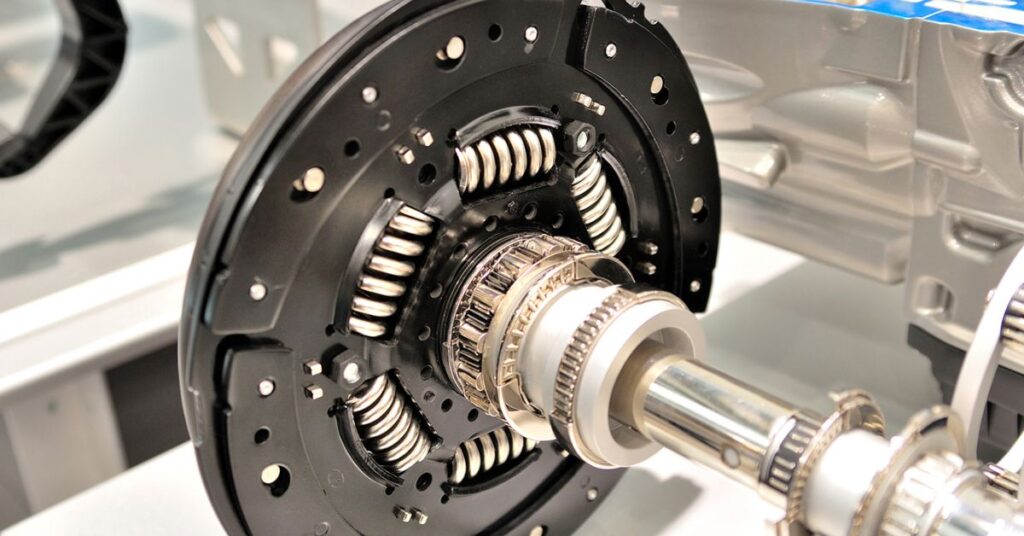
Transmission Mount Wear: Worn transmission mounts can cause excessive movement of the transmission, leading to rough shifts or misalignment of gears.
Addressing these issues promptly through proper maintenance and timely repairs can help ensure the longevity and smooth operation of your manual transmission vehicle. Regular inspections and servicing by a qualified mechanic are essential to detect and resolve these problems before they worsen.
BAD TORQUE CONVERTER: How to fix this issue
Fixing a bad torque converter typically involves the following steps.
Diagnosis: First, ensure that the issue is indeed with the torque converter. Symptoms may include slipping gears, shuddering during acceleration, or high RPM without corresponding acceleration.
Check Transmission Fluid: Ensure that the transmission fluid is at the correct level and is clean. Low or dirty fluid can cause torque converter problems.
Replace Transmission Fluid: If the fluid is dirty or degraded, drain and replace it with the manufacturer-recommended fluid. This can sometimes resolve torque converter issues.
Torque Converter Replacement: If the torque converter is damaged or malfunctioning, replacement may be necessary. This typically involves removing the transmission, accessing the torque converter, and installing a new one.
Inspect Other Transmission Components: While the transmission is out, it’s a good idea to inspect other components such as the transmission pump, valve body, and clutch packs for any signs of damage or wear.
Reassemble and Test: Once the torque converter or any other necessary components have been replaced or repaired, reassemble the transmission and reinstall it in the vehicle. Test drives the vehicle to ensure that the torque converter is functioning properly and that the transmission shifts smoothly.
Professional Assistance: Torque converter replacement can be a complex and labor-intensive process. If you’re not experienced with automotive repairs, it’s best to have a qualified mechanic or transmission specialist perform the work.
Keep in mind that fixing a bad torque converter may require specialized tools and expertise. Attempting to repair it yourself without proper knowledge can lead to further damage. Always consult a professional if you’re unsure about any aspect of the repair process.
MALFUNCTIONING SHIFT LOCK RELEASE: How to fix this issue
If you’re experiencing issues with a malfunctioning shift lock release, which prevents you from shifting out of park, you can try the following steps to fix the problem.
Check Brake Lights: When your car won’t go into gear when the engine is running, it can be a frustrating problem. One important thing to check is your brake lights. Sometimes, if the brake light switch is faulty or not working properly, it can affect the car’s ability to shift gears.
This switch is connected to the brake pedal and signals the transmission when to shift. If the brake lights don’t come on when you press the brake pedal, it could indicate a problem with the switch. Checking and replacing the brake light switch if necessary might help resolve the issue with your car’s gear shifting.
Brake Pedal Position: Make sure that the brake pedal is fully depressed. The shift lock release mechanism typically requires the brake pedal to be pressed down before it can be engaged.
Shift Lock Override: Most vehicles have a manual override feature for the shift lock release. This is usually a small slot or cover near the gear shifter where you can insert a key or screwdriver to manually release the shift lock.
Refer to your vehicle’s owner’s manual for the exact location and instructions on how to use this feature.
Inspect Shift Lock Solenoid: The shift lock release mechanism is often controlled by a solenoid that may become faulty over time. Check the solenoid for any signs of damage or malfunction. If necessary, replace the solenoid with a new one.
Check Wiring and Connections: Inspect the wiring and connections associated with the shift lock release mechanism. Loose or damaged wiring can prevent the mechanism from functioning properly. Repair or replace any damaged wiring or connectors.
Test and Troubleshoot: After performing the above steps, test the shift lock release mechanism to see if the issue has been resolved. If the problem persists, further diagnosis may be required, and it’s advisable to consult a professional mechanic or automotive technician for assistance.
Professional Repair: If you’re unable to fix the issue on your own or if you’re unsure about performing the necessary repairs, it’s best to seek professional help. A qualified mechanic will have the expertise and tools to diagnose and repair the malfunctioning shift lock release effectively.
Frequently Asked Questions
Why is my car jerking or shuddering when shifting gears?
Jerking or shuddering during gear shifts can be caused by low transmission fluid, worn clutch components, or faulty transmission solenoids.
How often should I check my transmission fluid?
It’s recommended to check your transmission fluid level and condition every month or as per your vehicle’s maintenance schedule.
What should I do if my car won’t move when I shift into gear?
If your car won’t move when shifting into gear, check the transmission fluid level and condition first. If it’s okay, there may be a problem with the clutch, transmission linkage, or internal transmission components.
Why is my car slipping out of gear while driving?
A slipping transmission could be due to low fluid levels, worn clutch components, or internal transmission problems. It’s essential to address this issue promptly to avoid further damage.
How can I tell if my transmission is overheating?
Signs of transmission overheating include a burning smell, difficulty shifting gears, or the transmission slipping. Pull over and let your car cool down if you suspect transmission overheating.
Can I drive with a transmission fluid leak?
It’s not recommended to drive with a transmission fluid leak as it can lead to severe damage to the transmission. Have the leak repaired by a mechanic as soon as possible.
Conclusion
Understanding common car transmission issues and knowing how to address them is crucial for maintaining the health and performance of your vehicle.
Whether it’s diagnosing problems like jerking or slipping gears, checking transmission fluid levels regularly, or seeking professional help when needed, proactive maintenance can help prevent costly repairs and ensure smooth driving experiences. By staying informed and taking prompt action when transmission issues arise, you can prolong the lifespan of your car’s transmission and enjoy reliable transportation on the road.
